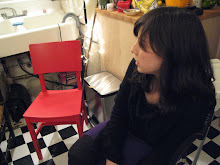
1911, Map of the Boroughs of Brooklyn and Queens: Shows elevated trains and running through Brooklyn and Queens

1888 Elevated Train Map of Brooklyn and Queens: Shows elevated trains running through Brooklyn and Queens (published by E.F.Linton Real Estate Co in conjunction with CW Hobbs Guide and Map Publishing Company) to show potential home buyers how fast a commute from Brooklyn to Manhattan and vise versa was. Official NYC Transit maps weren't issued until the 1920's and 30's.

Train timeline
The opening of the Brooklyn Bridge in 1883 saw the construction of many independent transportation (elevated and ground level) lines throughout Brooklyn.
The southbound train rider had two options after 1885. Once they reached the Brooklyn Bridge, they could take a cable car down from Park Row to Sands Street. They then had the option of two rival elevated train companies-The Broooklyn Elevajavascript:void(0)ted Railroad or The Kings County Elevated Rail Road (1885-1941). The former went through downtown Brooklyn from Washington and York streets and terminated at Gates Avenue and Broadway. It was later extended to the Manhattan Crossing station at east New York. In September 1885, it was extended east to Alabama Ave and in November 1885 extended west to Fulton Ferry.
Its rival company, the Kings County Elevated Rail Road, ran a line along Fulton street to Nostrand avenue. By 1891 it was extended to Brownsville and to East New York in 1893. The entire route was as follows: The Fulton Street Line ran from Park Row to Sands Street, then a short private right of way to Fulton Street near Tillary Street. Trains ran on Fulton Street to East New York, then turned south on Van Sinderen Ave, then east again on Pitkin Ave (also known at that time as Eastern Parkway), then north on Euclid Ave, then east on Liberty Ave to Grant Avenue in the City Line section of Brooklyn.
The Brooklyn El’s were the predecessor’s of today’s train lines—they were the trains that eventually went underground and were electrified. When the Fulton Street Line was torn down in 1941, many buildings that were in the shadows of the elevated train tracks became visible for the first time in 60 years. This stimulated proposals for physical improvements—one of many calls for the improvement of Fulton street (the site of the future Fulton Street Mall) over the years.

I don't know if anyone looks at commenys here -- this blog seems to have been neglected for 4 1/2 years -- but I'm wondering if higher-resolution images of these maps exist?
ReplyDelete